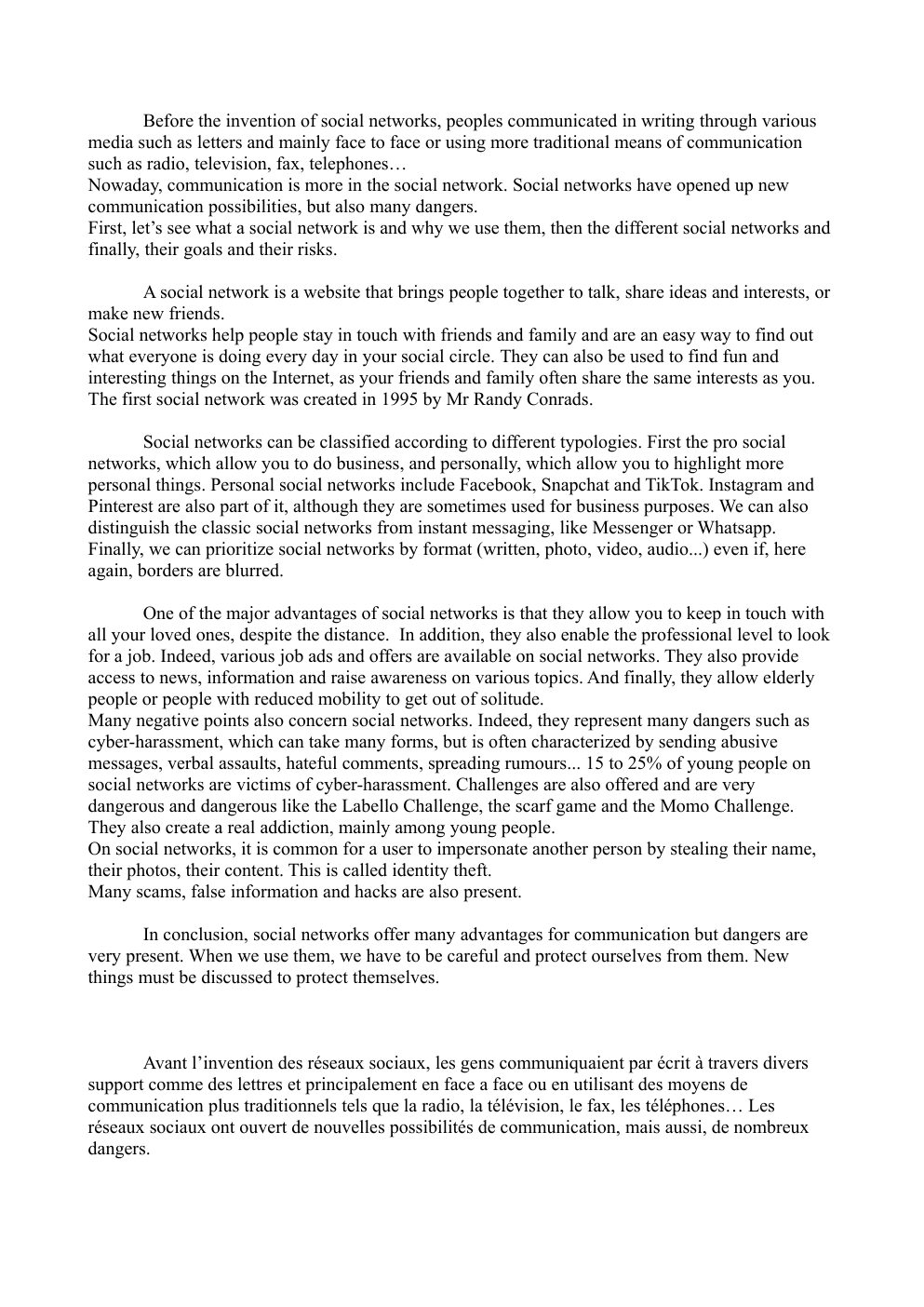social network
Publié le 15/03/2024
Extrait du document
«
Before the invention of social networks, peoples communicated in writing through various
media such as letters and mainly face to face or using more traditional means of communication
such as radio, television, fax, telephones…
Nowaday, communication is more in the social network.
Social networks have opened up new
communication possibilities, but also many dangers.
First, let’s see what a social network is and why we use them, then the different social networks and
finally, their goals and their risks.
A social network is a website that brings people together to talk, share ideas and interests, or
make new friends.
Social networks help people stay in touch with friends and family and are an easy way to find out
what everyone is doing every day in your social circle.
They can also be used to find fun and
interesting things on the Internet, as your friends and family often share the same interests as you.
The first social network was created in 1995 by Mr Randy Conrads.
Social networks can be classified according to different typologies.
First the pro social
networks, which allow you to do business, and personally, which allow you to highlight more
personal things.
Personal social networks include Facebook, Snapchat and TikTok.
Instagram and
Pinterest are also part of it, although they are sometimes used for business purposes.
We can also
distinguish the classic social networks from instant messaging, like Messenger or Whatsapp.
Finally, we can prioritize social networks by format (written, photo, video, audio...) even if, here
again, borders are blurred.
One of the major advantages of social networks is that they allow you to keep in touch with
all your loved ones, despite the distance.
In addition, they also enable the professional level to look
for a job.
Indeed, various job ads and offers are available on social networks.
They also provide
access to news, information and raise awareness on various topics.
And finally, they allow elderly
people or people with reduced mobility to get out of solitude.
Many negative points also concern social networks.
Indeed, they represent many dangers such as
cyber-harassment, which can take many forms, but is often characterized by sending abusive
messages, verbal assaults, hateful comments, spreading rumours...
15 to 25% of young people on
social networks are victims of cyber-harassment.
Challenges are also offered and are very
dangerous and dangerous like the Labello Challenge, the scarf game and the Momo Challenge.
They also create a real addiction, mainly among young people.
On social networks, it is common for a user to impersonate another person by stealing their name,
their photos, their content.
This is called identity theft.
Many scams, false information and hacks are also present.
In conclusion, social networks offer many advantages for communication but dangers are
very present.
When we use them, we have to be careful and protect ourselves from them.
New
things must be discussed to protect themselves.
Avant l’invention des réseaux sociaux, les gens communiquaient par écrit à travers divers
support comme des lettres et principalement en face a face ou en utilisant des moyens de
communication plus traditionnels tels que la radio, la télévision, le fax,....
»
↓↓↓ APERÇU DU DOCUMENT ↓↓↓
Liens utiles
- Do people give social network too much power
- stratégie du marketing social
- Digital media management Social Media Management
- Commentaire de texte Du contrat social de Rousseau: Pourquoi la représentation du peuple est un frein à la souveraineté ?
- l'homme est-il un animal social ?


